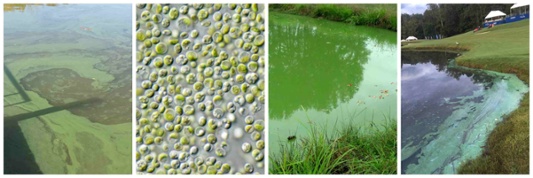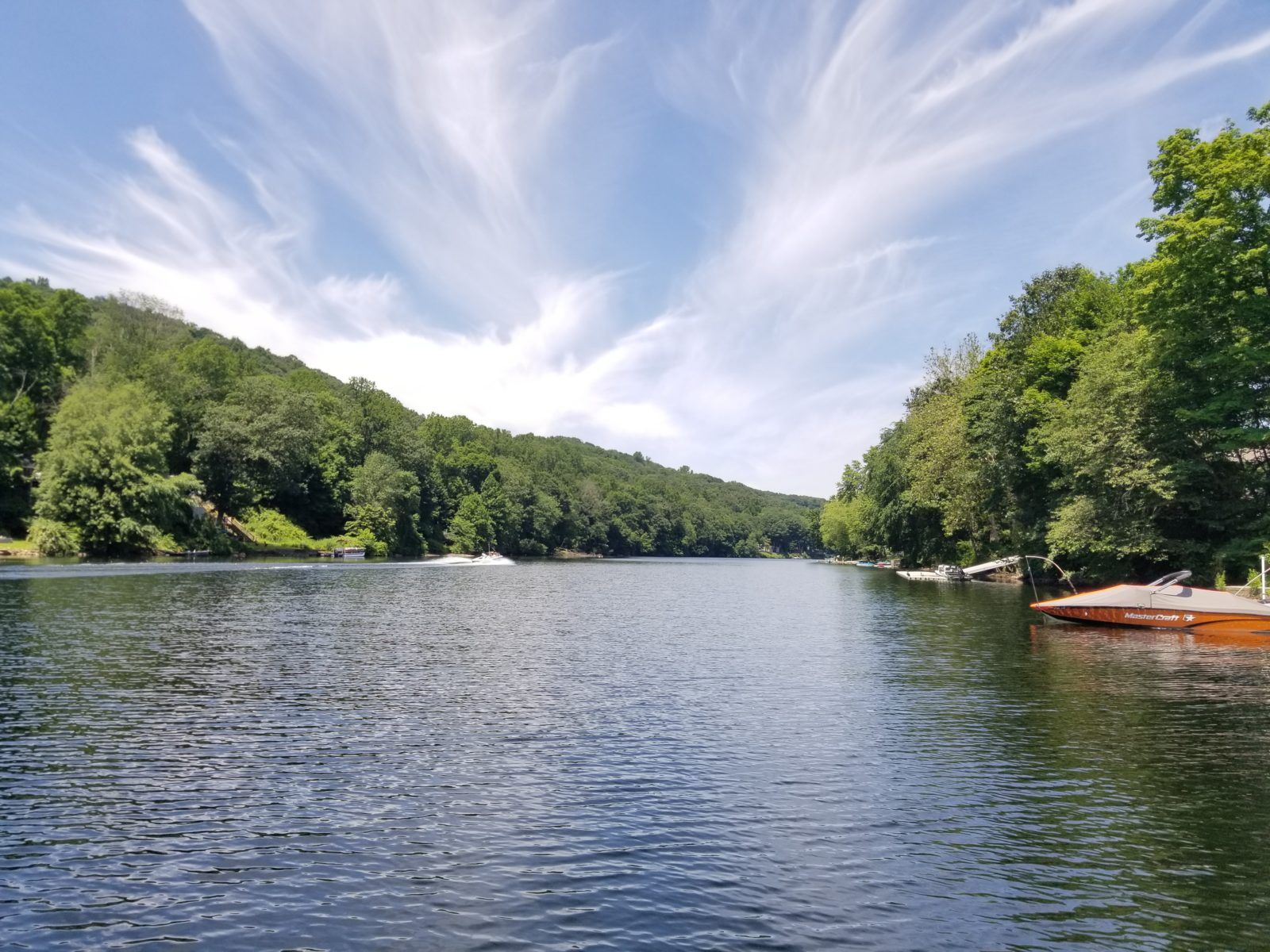7 Tips to Help Protect Your Family & Pets From Dangerous Toxic Algae
August 13th, 2019

Over the weekend, there were several cases reported of dogs passing away after swimming in lakes and ponds containing toxic algae. Though public knowledge about Harmful Algal Blooms (HABs) is increasing, many remain unaware of the dangerous effects HABs can have on pets, wildlife and humans. Common experiences include skin rashes, liver and kidney toxicity, nervous system problems, and respiratory complications. In more severe cases, exposure or digestion of these toxins can be deadly and has suspected links to degenerative diseases like ALS, Alzheimer’s and Parkinson’s.
Harmful Algal Blooms (HABs) can occur naturally, but have been a problem for decades due to the negative environmental impacts associated with urban development, mass agriculture and pollution. To help limit the growth of HABs in your community waterbodies, SOLitude Lake Management®, an industry leader in lake, stormwater pond, wetland and fisheries management services, recommends the following sustainable tips to homeowners, golf courses and municipalities:

Properly identify HABsAccurate identification of harmful algal blooms is the first step to protect your family and pets from the negative effects of algal toxin exposure. HABs can manifest in parallel streaks or clumped dots. Other blooms may look like spilled blue, green or white paint or turn the water a bright “pea soup” green. Keep an eye out for soupy or oily scum on the surface of the water.
Dispose of organic materialsFollowing yard work, leaves, grass and other debris should be bagged and removed from the property to prevent them from accumulating and decaying in nearby waterbodies. When organic materials are allowed to decompose in water resources, they result in nutrient pollution, which can lead to nuisance algae.
Establish a beneficial bufferSteps should be taken to intercept runoff containing sediment, trash, pet waste and other organic materials from entering lakes and ponds during rainstorms. Allow native flowering, deep-rooted vegetation to grow 18 inches tall and three to five feet from the edge of the lake or pond shoreline in a beautiful vegetative buffer.
Reduce excess nutrientsFor lakes and ponds with chronic nutrient problems, the application of phosphorus-locking technologies can make a noticeable impact. When applied by a licensed professional, these products work to rapidly remove excess nutrients from the water column, improving water clarity and reducing the food source of algae.
Apply beneficial bacteriaAnother way to limit algae’s food source is through the introduction of desirable bacteria and enzymes through a process called biological augmentation. The beneficial bacteria can help consume additional pond nutrients that fuel nuisance algae blooms and help facilitate the degradation of the organic nutrient sources.
Introduce aerationWhen paired with other nutrient-limiting strategies, floating fountains and submersed diffused aerators can help consistently circulate warm, stagnant water and facilitate the conversion of excess nutrients to forms that do not sustain algae. Likewise, new premium aeration options like nanobubble aeration can be used to directly eliminate algae and dangerous cyanotoxins while balancing water quality.
Regularly test water qualityLake managers, pond owners and municipality leaders often wait until after a harmful algal bloom appears to conduct water quality tests, but a proactive testing program can help identify water quality impairments related to dissolved oxygen, pH or nutrient levels before they get out of hand. Over time, water quality data can be used to predict the onset of a bloom and prevent its impact without closing the waterbody or interfering with recreation, irrigation or drinking water services.
Contact Us About Toxic Algae Bloom
Find Your Balance
Watch Free Webinar
Find Your Water Quality Solution
Contact the experts at 888-480-5253 for all of your lake, stormwater pond, wetland and fisheries management needs.
SOLitude Lake Management is a nationwide environmental firm committed to providing sustainable solutions that improve water quality, enhance beauty, preserve natural resources and reduce our environmental footprint. SOLitude’s team of aquatic resource management professionals specializes in the development and execution of customized lake, stormwater pond, wetland and fisheries management programs that include water quality testing and restoration, nutrient remediation, algae and aquatic weed control, installation and maintenance of fountains and aeration systems, bathymetry, shoreline erosion restoration, mechanical harvesting and hydro-raking, lake vegetation studies, biological assessments, habitat evaluations, and invasive species management. Services and educational resources are available to clients nationwide, including homeowners associations, multi-family and apartment communities, golf courses, commercial developments, ranches, private landowners, reservoirs, recreational and public lakes, municipalities, drinking water authorities, parks, and state and federal agencies. SOLitude Lake Management is a proud member of the Rentokil Steritech family of companies in North America.










